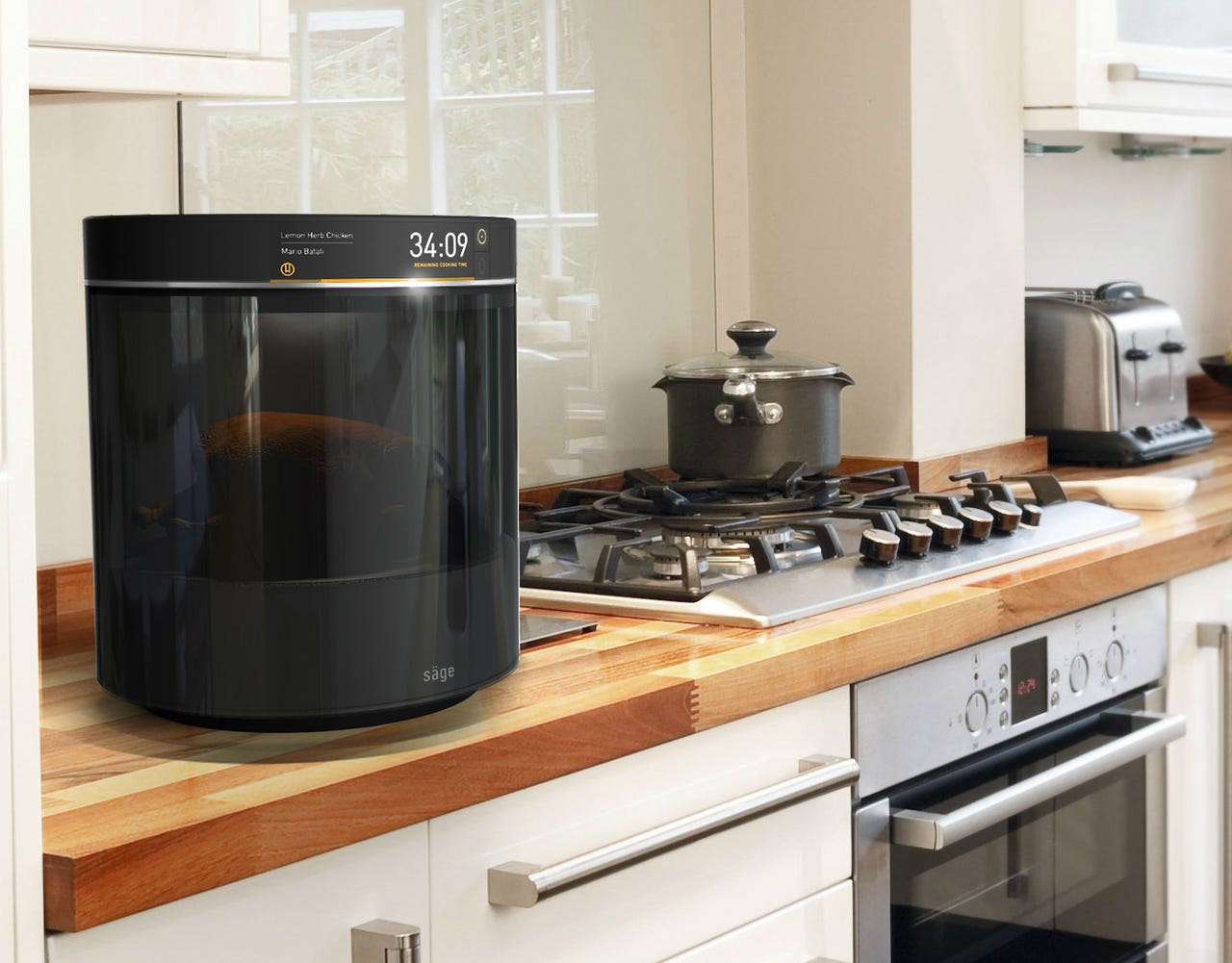Freescale's Radio Frequency Oven: The end of the Microwave?


In 1967, Amana Corporation introduced the first tabletop-sized microwave oven for consumer use. Since then, the microwave has become an indispensable small appliance in virtually every home in the western world and also (to a limited extent) in commercial food preparation.
The primary cooking element of all microwave ovens is the Cavity Magnetron, which is derived from 1940's-era radar technology -- hence the marketing term "RadarRange" which Amana used for some time after the product's introduction.
While microwave ovens and magnetrons have been miniaturized and have become much less expensive over the last 50 years, the fundamental technology has not changed much at all.
Microwave ovens are great for re-heating of pre-cooked food, but they have numerous drawbacks, including uneven cooking and heating (hot and cold spots) and the inability to control when, where and how much energy is applied, particularly when dealing with food starting in a frozen, uncooked state.
There is also the issue that microwave ovens operate in the same frequency range as 2.4Ghz Wi-Fi, so even the best sealed appliance is going to have some energy leakage and can interfere with the operation of other devices transmitting on that same spectrum.
Featured
At this week's Freescale Technology Forum in Austin, TX, the company is looking to revolutionize how we approach cooking, and will introduce technology that fits in with the modern convenience-oriented lifestyle, with an oven that could someday replace the venerable microwave.
Unlike microwave ovens which use magnetrons, the new oven appliance uses radio frequency (RF) emitters, which are derived from the very same technology that Freescale Semiconductor (previously Motorola's carrier equipment division) uses to power cell phone towers.
With this technology, an RF oven can bring food from a raw or frozen state to a cooked temperature rapidly and without intervention.
Unlike conventional microwave ovens, Freescale's vision for a RF oven allows for much more precise levels of emission by controlling cycles, locations and levels of cooking energy.
Additionally, the same emitters that are used to transmit energy for cooking are also able to sense the level of doneness of the food, which is something a magnetron in a microwave oven cannot do.
Those of you with a lot of connected devices in your homes will be happy to hear that the narrow band the RF oven technology uses doesn't interfere with Wi-Fi, as the emitters operate below the 2.4Ghz range.
RF oven designs also aren't limited to a specific form factor due to the box-like limitations of magnetron design in a conventional microwave oven. Additionally, the solid-state RF emitters have a much longer lifespan (estimated 20 years) than that of magnetrons, which can lose their effectiveness in under 500 hours of use.
Through the use of multiple emitters and beam-forming in potential OEM RF oven designs, the technology also enables simultaneous cooking of multi-component food dishes, or having multiple dishes being cooked in the oven at the same time with different proteins, starches and vegetables in them, which vastly simplifies food preparation.
With the addition of convection heating to enable browning and crisping (also known to foodies as the Maillard Reaction) Freescale's concept design can also support a wide array of cooking types and qualities, from searing to browning to baking to poaching, none of which the microwave is effectively capable of without using packaging "hacks" (i.e., microwave pizza boxes and other similar materials for heating microwave pastries, such as Hot Pockets).
Freescale's vision doesn't stop at the use of RF emitter technology itself as a high-tech, more versatile replacement to the magnetron, though. Freescale sees their concept appliance as being a connected IoT device itself.AR + VR
By partnering with supermarkets and food preparation companies, entire meals could be packaged from a frozen or refrigerated uncooked state specifically for use with this technology, based on a cooking profile/sequence or program for that dish or meal.
This profile could be stored in a cloud database which could be linked to your supermarket purchase record. Alternatively, the cooking program could be retrieved through a package barcode scan from your smartphone, or even an entry from your favorite recipe site or food blog. Or perhaps with RFID tags on the food packaging itself.
Obviously, technology like this has some pretty broad implications for the supply chain and could create new business models and opportunities for food-related businesses, given the level of convenience this new oven could bring to the table.
Imagine internet-driven home delivery of freshly prepared meals from a variety of sources -- including restaurants, grocery stores and farm-to-table cooperatives -- all quickly and easily cooked in the appliance, with very consistent and predictable results, not unlike what you would get at your favorite restaurant.
It sounds almost like the replicator on Star Trek, or Jane's kitchen on The Jetsons. But in the next several years, the age of the "Nuke Box" could be over.
Is your household ready to embrace RF cooking technology? Talk Back and Let Me Know.